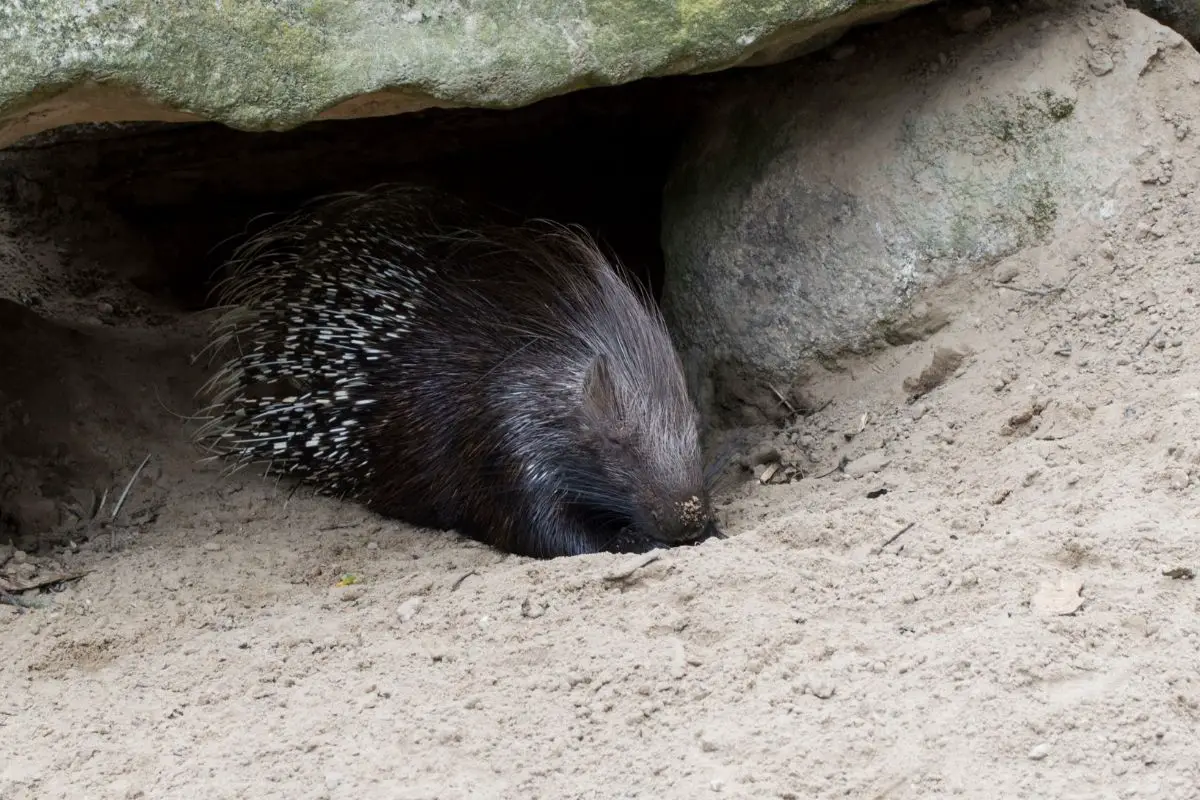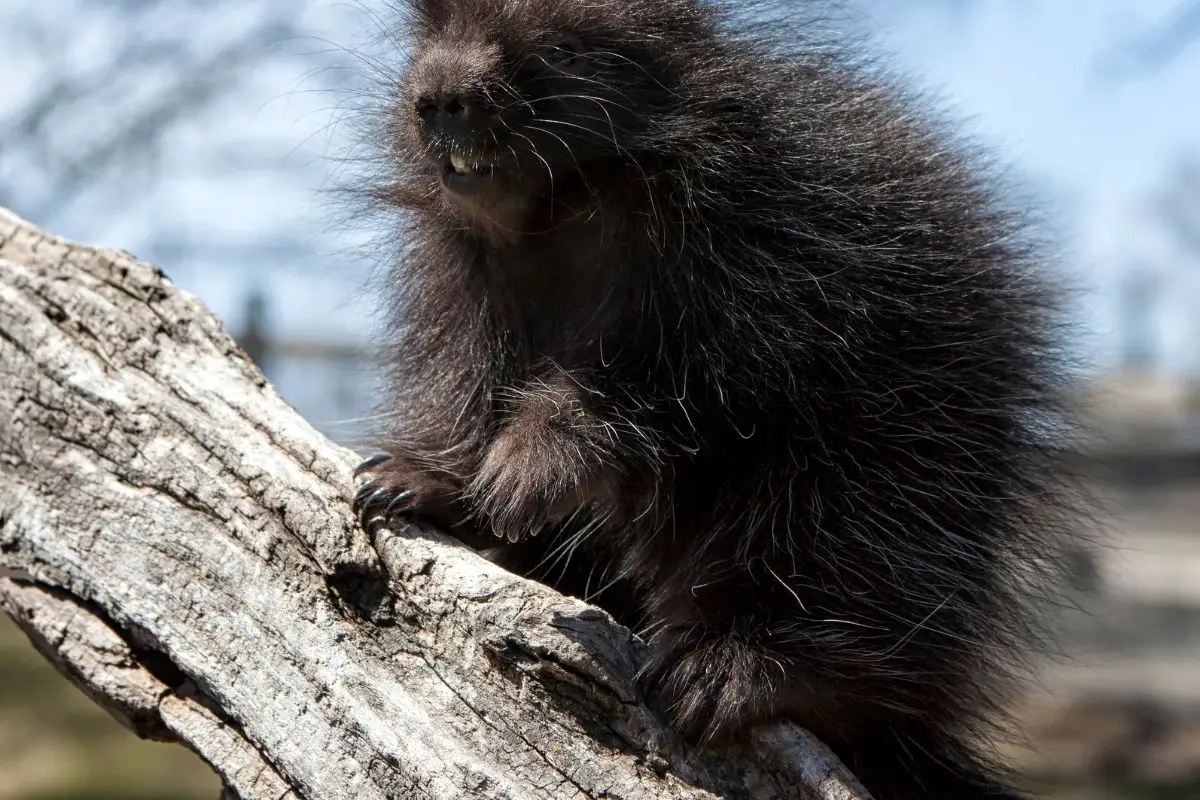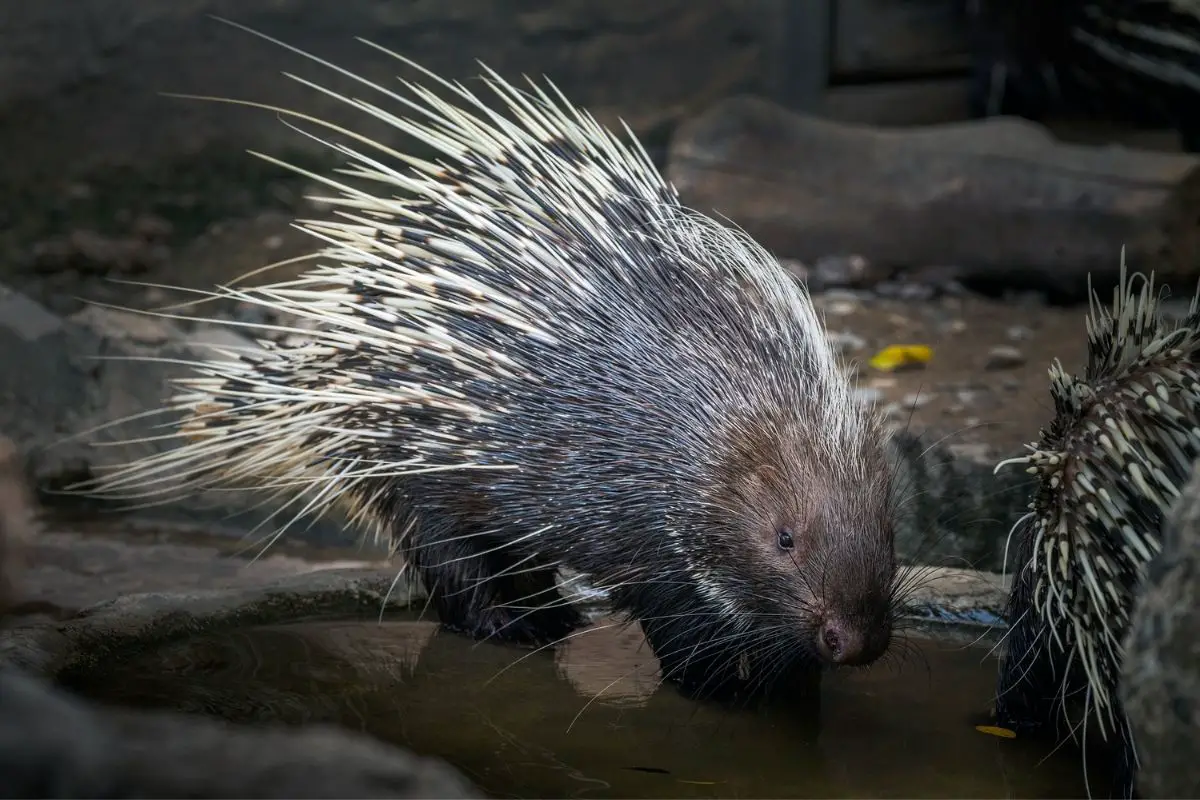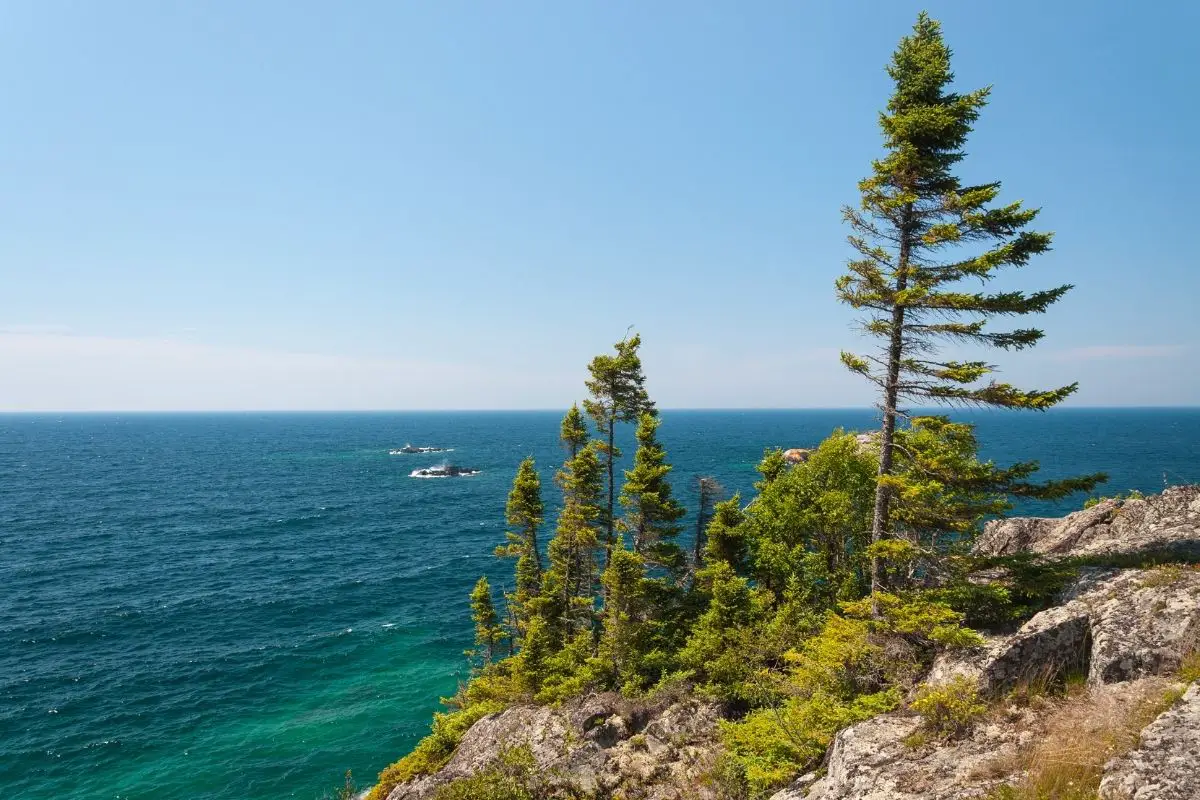
Porcupines are great swimmers. That is, some breeds of them are. The North American porcupine, the crested porcupine, and the brush-tailed porcupines all love swimming!
You can go for a walk in a wooded area and probably wouldn’t be surprised to come across a porcupine nibbling on leaves or berries. Having one fall out of a tree might surprise you for a minute, but you wouldn’t think it out of place.
However, can you imagine walking along a beach or taking a swim and coming across one of these prickly critters passing you? It just might happen.
The Nature of Porcupines

Porcupines live in many different areas but normally stick with areas where they can climb trees or find roots and other small areas to hide in. While they have great protection with all those quills, these animals are by nature very docile and prefer not to fight. On land, they are clumsy and slow.
Normally, they are satisfied with the food they can find where they live. Like humans, however, they may get cravings for a certain delicacy that can only be found in water and they will set off to find it. In the water, they are quite agile and move quickly.
How Porcupines Swim

The average porcupine has over 30,000 quills covering its back, legs, and tail. Each of these quills is actually hollow inside and very lightweight. The hollow space is filled with air and this allows the quills to float.
With so many attached to the porcupine’s body, they work like little life jackets and keep it afloat. It probably doesn’t hurt that their little round bodies would also lend themselves to buoyancy! Once the porcupine is afloat, it can use its paws like a dog paddling in the water.
This moves him ahead and helps him control the direction he wants to head in.
Why Porcupines Swim
It is possible that some porcupines just like being in the water. It can cool them in the summer and they are less likely to be bothered by predators. We haven’t found one that can communicate this idea, however, so we can only guess the main reasons they like to swim.
These animals find the taste of aquatic plants, such as arrowheads and water lilies especially delicious. They often have a salty taste and porcupines crave salt. If the porcupine wants these plants, they have to swim in order to get them.
Many times, they will eat while they are still in the water, but at other times they will carry the plants back to their dens where they eat the plants later or offer them to their young ones who can’t yet forage for themselves.
Another reason that a porcupine will choose to swim while it is foraging is that there is less competition for food and it is less likely to be approached by another animal that is set on harming it. Out in the water, the porcupine can relax and feel safer as it tries to satisfy its hunger.
Where Do They Swim?

You probably won’t find a porcupine swimming in an ocean or even one of the Great Lakes because the waves would be too harsh for them. These animals would prefer calm waters such as a pond or gently flowing stream or creek. Most porcupines sleep during the day and go out at night, so they will stick closer to shore or only swim when the night is bright.
They do not have very good eyesight, so they will avoid busy areas. You are also more likely to find the porcupine in an area with high grass or cattails so they have a ready place to hide.
Not a Common Thing
There are very few species of porcupines that actually enjoy being in the water. The North American porcupine is one of these. The other two that like to swim are the crested and brush-tailed porcupines.
All porcupines have the ability to float, however, and may enter water as a way to escape an attack. Remember, these docile creatures will always attempt to escape rather than fight whenever they get the opportunity.
Wrapping It Up
There you have it. If one day you take a trip down to the local pond and happen to see a little floating creature with prickly spines sharing the water, enjoy watching but keep your distance.
Remember, he still has his quills and can still go to battle if necessary, but why would you want him to when he’s simply taking a quiet retreat to enjoy a favorite delicacy without the stress of being attacked?



